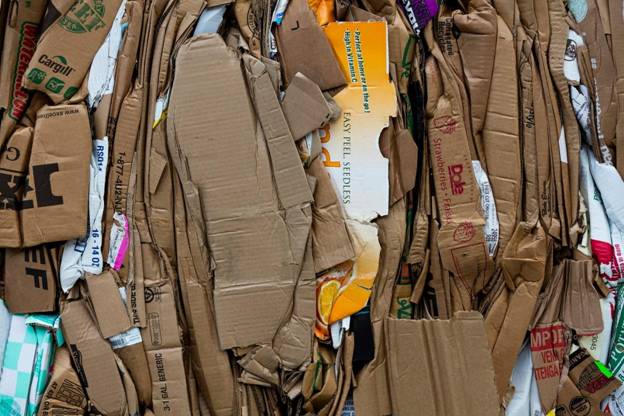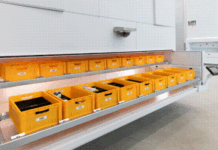Not long ago, vigorous waste management practices were mostly limited to multinational corporations or major municipal councils. That mindset has spread much further ever since.
Small and medium-sized enterprises across the U.K. are exploring new solutions to deal with business waste efficiently and sustainably. Today’s marketplace places more value than ever on the three circular economy principles and their derivatives:
- Ensuring the continuous use of materials and products
- Eradicating waste and pollution
- Regenerating natural systems.
More and more enterprises have begun realizing that efficient waste management isn’t only generating favorable publicity and helping them meet regulations but can also improve their business bottom line. Rising pressure to stick to eco-friendly practices, advancing packaging levies, and increasing landfill taxes make it impossible for businesses to disregard their approach to waste streams. Fortunately, solutions like waste balers and compactors are easily findable and readily available, with the possibility of being either borrowed or bought. And that’s not all.

The case for plastic and packaging
With limited resources, many British SMEs manage waste through a mix of local skip services and ad hoc bin collections. But this patchy setup often leads to unsorted waste, offering no financial return and higher landfill fees. At the same time, valuable materials that are not leveraged and yet could bring in rebates go unnoticed.
Ignoring environmentally related issues in today’s regulatory landscape is unsafe. Take the Plastic Packaging Tax in the U.K.: companies using under 30% recycled plastic for package production must pay a charge, and even small-scale manufacturers are required to track plastic use carefully. Otherwise, they may risk facing penalties.
At the same time, Extended Producer Responsibility (EPR) regulations require brand owners to take on a greater share of recycling costs. Together, these measures emphasize the pressing need for SMEs to adopt more efficient waste management strategies if they want to stay ahead of the competition.
Today, SMEs can use advanced gear
Whether small or medium, enterprises today can access cutting-edge gear like agricultural tyre sidewall cutters, IoT-integrated smart bins, integrated data dashboards for advanced data analysis, and last but not least, specialized balers. The latter can create a considerable revenue stream with profits depending on the amount of recycled waste sold and the chosen marketplace. The revenue can be for other operational expenses. And this model isn’t limited to balers. Logistics or automotive companies, for instance, can buy dedicated gear like sidewall cutters and tyre balers and turn disposable items into sellable supplies.
Savings gather over time
Transforming waste from a cost center into a profit generator starts with visibility and data—knowing what you’re discarding and what it’s worth. What might now represent a back-office burden can become a driver of growth and success.
For SMEs looking to overhaul their waste management, an audit of existing practices is a common starting point. This includes tracking the volume and types of waste created and determining materials that can be recycled and/or resold. They can also engage with local recycling providers given that pricing and acceptance standards can differ from region to region. With the groundwork laid, the next step remains to invest in appropriate waste-handling equipment—a decision that depends on the produced waste’s volume, type, and frequency.
Baler use is on the rise
Whether purchased or rented, baling equipment is becoming increasingly popular worldwide for handling a wide range of materials—including metal, textiles, paper, cardboard, plastic, and even agricultural surplus. There are more types of balers, too. For instance, a firm that generates a moderate amount of waste, like some retail stores, is inclined to get a small vertical baler. Contrarily, operations that result in higher volumes of cardboard, like e-commerce sites, factories, or packaging warehouses, may need larger-capacity equipment. Thus, they go with bigger balers.
Regardless of the machinery chosen, effective waste management depends on proper staff training and seamless integration into daily operations. Even the most advanced equipment becomes ineffective if you continue using general bins out of convenience. Without correct training, the whole undertaking may result in a costly failure. Because baling doesn’t only come down to getting the machinery in and working, industry leaders like Miltek offer the whole package a company may need, from staff training to flexible baler rental packages to maintenance and even a free trial sample.
Businesses often face a choice between short-term profits and long-term growth when deciding whether to adopt sustainable waste disposal practices. In this context, baling systems stand out—not only as effective waste management solutions but also as tools for transforming waste into revenue. The trick is to find recycling operators willing to take baled materials. Luckily, numerous recyclers organize free pickups if the amount of material is acceptable, which results in decreased overheads.
Beware of contamination
Even the best-planned waste management systems can be disrupted by contamination, such as when liquids and food scraps combine with materials that could be recycled, resulting in whole bales losing usefulness and value. Moreover, practical concerns like space and safety must be addressed. High-capacity balers require sufficient room for safe use, and all new equipment must be installed in accordance with local health and safety codes.
With good expertise and planning, these demands turn into a competitive edge.
Dare to take pride in your efforts
Don’t hesitate to make your efforts and results public. Highlighting the amount of waste that you save from going to and clogging the already-suffocated landfill and how effectively each material is recycled reinforces your ESG credentials.
In a world increasingly focused on ethical sourcing and environmental responsibility, this transparency can be a competitive advantage.
Conclusion
It pays to implement thorough waste management solutions, train staff on using them, and make your results public. Preferably, businesses leading by example will keep a solid record of results, including disposal expenses, monthly capacity, and generated revenue. The benefits go far beyond profit, shaping how your business is viewed by customers, stakeholders, and investors alike. Without sustainable and durable waste management strategies in place, success can become a distant dream.





